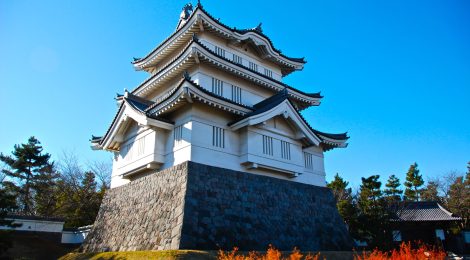
Site of Oshi Castle
[Heading 2: History]
The history of the castle dates back to ancient times. It was initially built as a defensive structure to protect the region from invading forces. The castle has witnessed numerous battles and sieges throughout its existence, playing a significant role in the region’s history.
During the feudal era, the castle served as the residence of the ruling feudal lord. It was a symbol of power and authority, showcasing the wealth and influence of the lord. The castle was not only a military stronghold but also a center for governance and administration.
Over the centuries, the castle underwent several renovations and expansions. Each successive lord contributed to the castle’s development, adding new structures and fortifications to enhance its defensive capabilities. The castle’s architecture reflects the different periods and styles of Japanese history, making it a fascinating blend of traditional and modern design.
[Heading 3: Architecture]
The castle’s architecture is a testament to the skill and craftsmanship of the artisans of that time. The main keep, or donjon, is the central structure of the castle and is often the tallest building within its premises. It was designed to provide a strategic vantage point for the defenders, allowing them to survey the surrounding area and spot any approaching enemies.
The walls of the castle were built using a technique called “mud wall construction.” Layers of earth and clay were compacted and reinforced with wooden frames to create sturdy and resilient walls. This construction method not only provided excellent insulation but also made the walls resistant to fire and projectiles.
The castle’s interior is equally impressive, with spacious rooms and intricate woodwork. The lord’s living quarters, known as the “Honmaru,” were lavishly decorated and furnished with the finest materials. The castle also housed a variety of facilities, including kitchens, storage areas, and meeting rooms.
[Heading 3: Castle Grounds]
The castle grounds are vast and encompass various structures and gardens. The outer bailey, or “ni-no-maru,” is where the castle’s defenses were concentrated. It was surrounded by high walls and guarded by watchtowers and gates. The inner bailey, or “san-no-maru,” housed the main keep and other important buildings.
The castle’s gardens are meticulously maintained and offer a serene and peaceful atmosphere. They feature traditional Japanese landscaping elements such as ponds, bridges, and carefully pruned trees. The gardens are a popular spot for visitors to relax and enjoy the natural beauty of the surroundings.
[Heading 2: Castle Events]
Throughout the year, the castle hosts a variety of events and festivals. These include traditional performances, exhibitions, and reenactments of historical battles. Visitors can witness traditional martial arts demonstrations, try on samurai armor, and participate in traditional tea ceremonies.
One of the most anticipated events is the annual cherry blossom viewing, or “hanami.” During this time, the castle grounds are adorned with beautiful cherry blossoms, creating a picturesque scene. Visitors can enjoy hanami parties, picnics, and take part in traditional Japanese games and activities.
The castle also holds special events during the autumn season when the leaves change color. The vibrant hues of red, orange, and yellow create a stunning backdrop for visitors to admire. There are often cultural performances and food stalls offering seasonal delicacies.
[Heading 2: Conclusion]
In conclusion, the castle is not just a historical monument but a living testament to japan‘s rich cultural heritage. Its architecture, history, and events showcase the country’s traditions and provide visitors with a deeper understanding of its past. Whether you are interested in history, architecture, or simply appreciate the beauty of nature, a visit to the castle is a must. Explore its grounds, immerse yourself in its history, and experience the charm of this ancient fortress.
Address And Maps Location:
17-23 Honmaru, Gyoda-shi, Saitama-ken
Subscribe, follow @idbcpr and idbackpacker.com